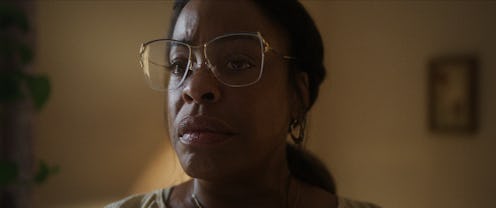Streaming
Glenda Cleveland Died 2 Decades After Trying To Turn In Neighbor Jeffrey Dahmer
Police ignored her concerns when she attempted to save one of the serial killer’s young victims.

By the time many viewers streamed Netflix’s Dahmer — Monster: The Jeffrey Dahmer Story, they were already well aware of the 17 gruesome murders that the titular serial killer committed between 1978 and 1991. However, a lesser-known element that the true-crime dramatization covers is how systemic racism and institutional failures of the police “allowed one of America’s most notorious serial killers to continue his murderous spree in plain sight for over a decade.”
One such real-life figure that Dahmer spotlights is Glenda Cleveland (Niecy Nash), one of Dahmer’s neighbors, who repeatedly contacted police and the FBI but was not taken seriously. Though the Netflix series depicts Cleveland as living in a Milwaukee apartment directly next door to Dahmer (Evan Peters), she actually lived in an adjacent building, according to the Milwaukee Journal Sentinel. Because her reports were not investigated, the serial killer went on to brutally murder an additional five victims that some believe could have been saved.
One of those five victims was 14-year-old Konerak Sinthasomphone. On May 27, 1991, Cleveland's daughter, Sandra Smith, and niece, Nicole Childress, spotted the young boy fleeing from Dahmer in an alley. Sinthasomphone was naked, bleeding, and had been drugged, but when police arrived on the scene, they chalked up the incident to a homosexual lovers’ spat. They left the young man with Dahmer, who ultimately murdered him.
“The police were right there, and they walked him right back into Jeffrey Dahmer’s apartment, I believe, for one of two reasons,” Nash explained in a Netflix promo video. “One, because it was a Black woman complaining and calling them to do something. And, two, because they believed what they stumbled on was a same-sex couple. ... I think it was homophobia, on one hand, and not having that much respect for a Black woman, on the other hand.”
Cleveland’s then-18-year-old daughter also described that evening to the Associated Press. “We tried to give the policemen our names, but he just told us to butt out,” Smith said at the time. “I couldn’t understand why he didn’t want our names. I said, ‘What are you going to do about this? This is a boy.’”
Dahmer went on to kill four more young men in the following weeks, before police arrested him on July 22, 1991. As revisited in the Netflix series’ first episode, Tracy Edwards was able to escape his apartment and flag down two officers. Once inside, authorities found several severed heads, skeletal remains, and dismembered body parts.
Following Dahmer’s arrest, the Rev. Jesse Jackson (Nigel Gibbs) traveled to Milwaukee to meet with Cleveland. “Police chose the word of a killer over an innocent woman,” Jackson said at the time. Cleveland, for her part, told the many reporters gathered outside her home, “I just want to get back to normal,” and remained in the same apartment until 2009.
Meanwhile, the data entry specialist received several awards and honors from local women’s groups, the Common Council, County Board, and then-mayor John Norquist, who called her a model citizen. Cleveland eventually moved but only a couple of blocks away from the scene of Dahmer’s crimes.
Then, in December 2011, police found Cleveland dead in her apartment while conducting a wellness check. The medical examiner’s office ruled that the 56 year old died of natural causes connected to heart disease and high blood pressure.
Still, her legacy lives on. “If anything, I would want people to know that Glenda Cleveland was special. That was a special woman,” Nash added. “To continue on and on and on in an effort to get someone to do something, she deserved way more than a little cheesy plaque in the bottom of a social hall somewhere. ... And I would want people to know that we all know or have been or will be a Glenda Cleveland in this life. That’s for sure.”
So when Dahmer approached 1 billion hours streamed within the first month of its release, Nash naturally felt emotional about shining such a large spotlight on Cleveland’s story. “The truth is, I cried like a baby,” she shared during a Netflix press conference on Oct. 29, recalling a phone conversation with creator Ryan Murphy. “And I cried like a baby because, I said to Ryan, ‘It is my prayer that wherever Glenda Cleveland’s soul is resting that she finally feels heard. She finally knows that her story has gone all around the world.’ That was important to me.”
This article was originally published on